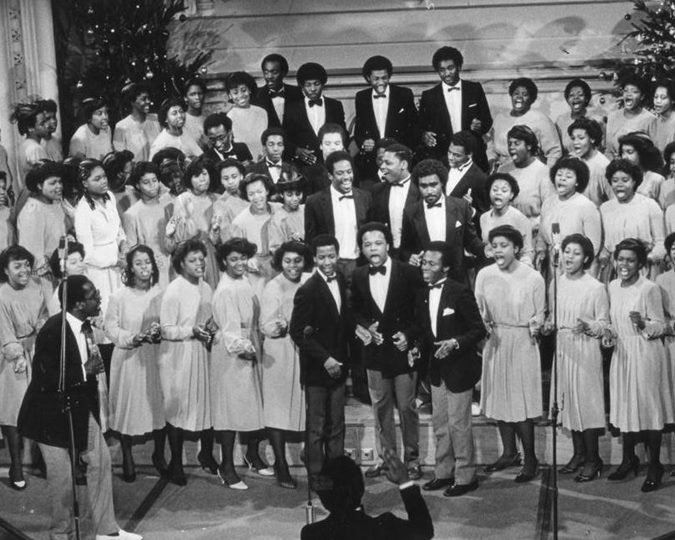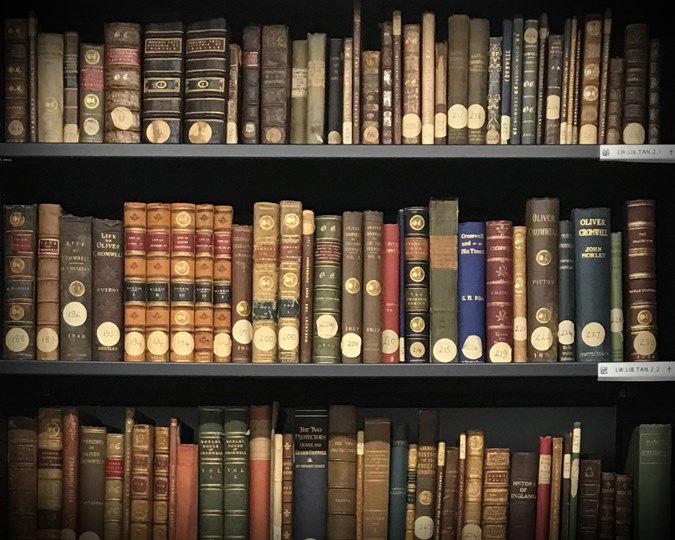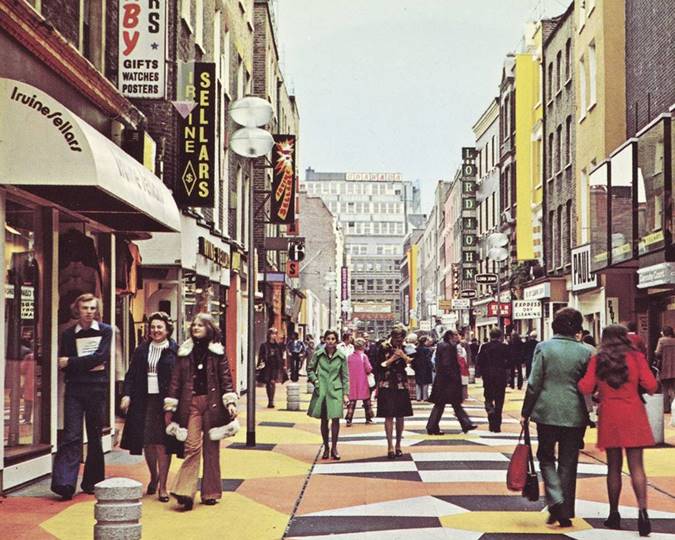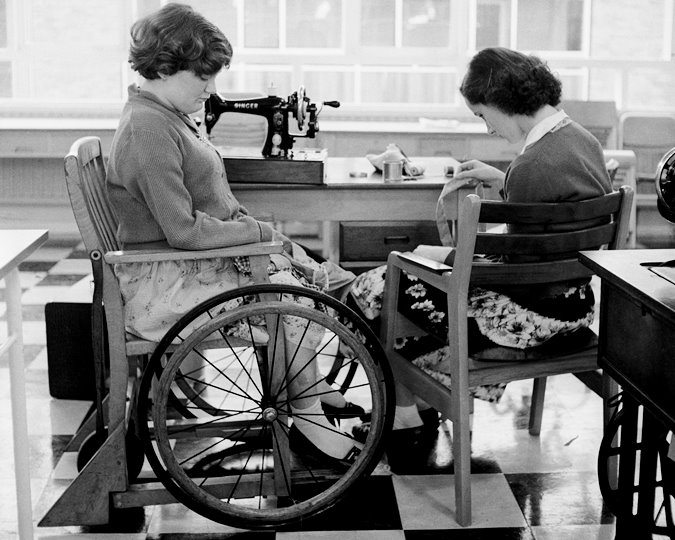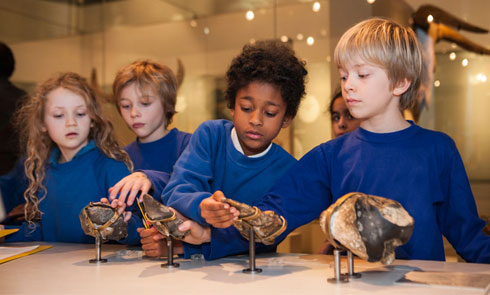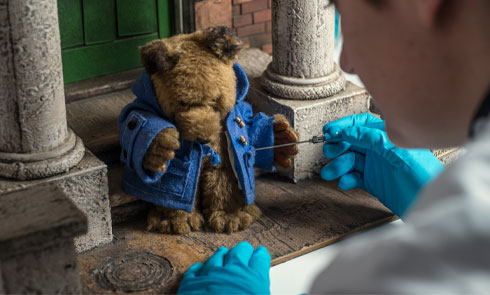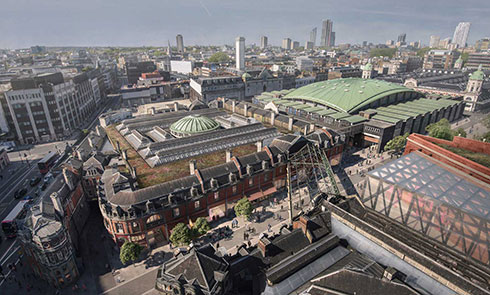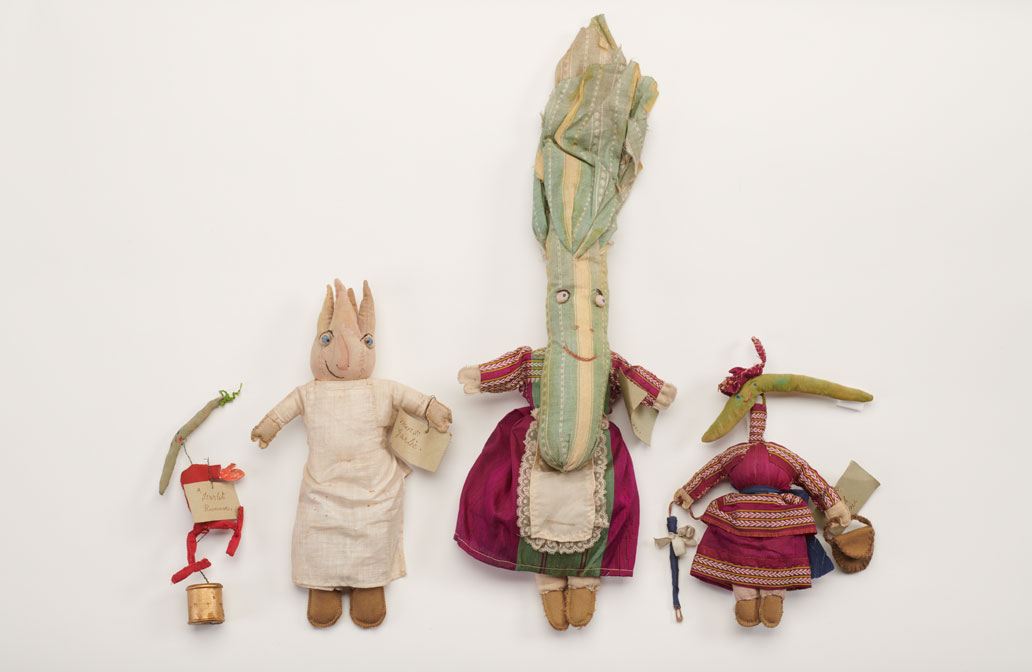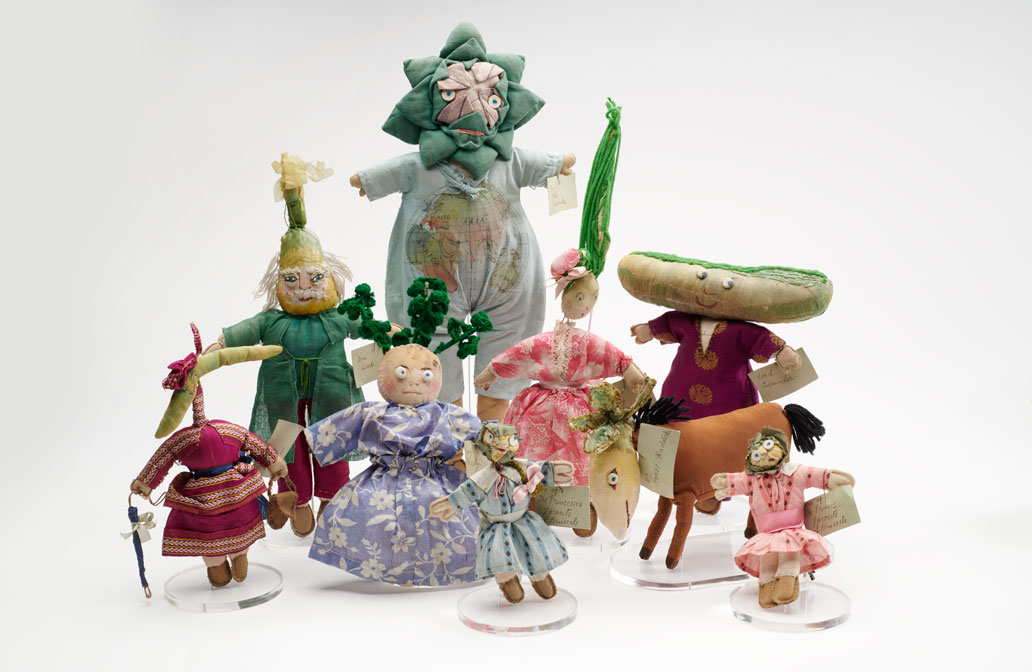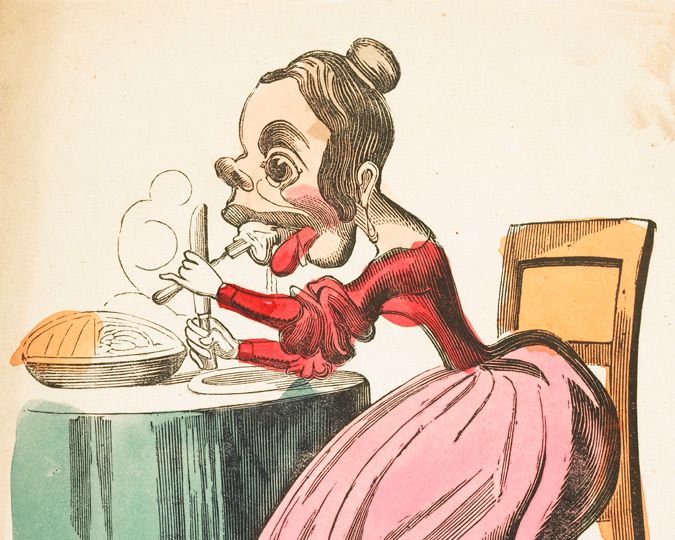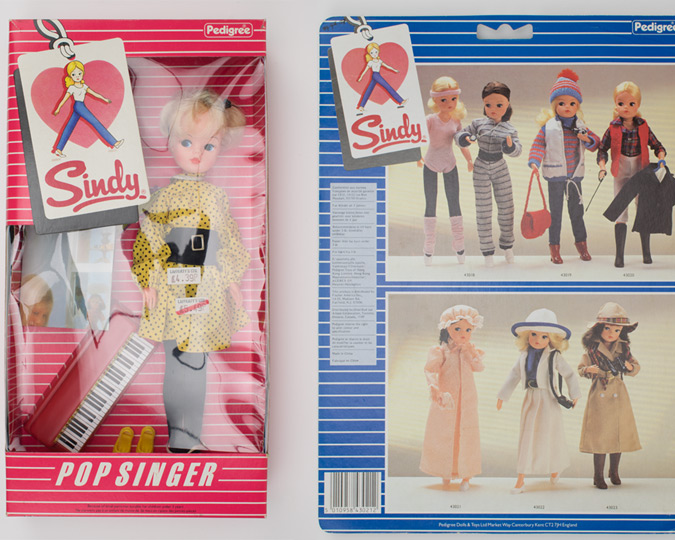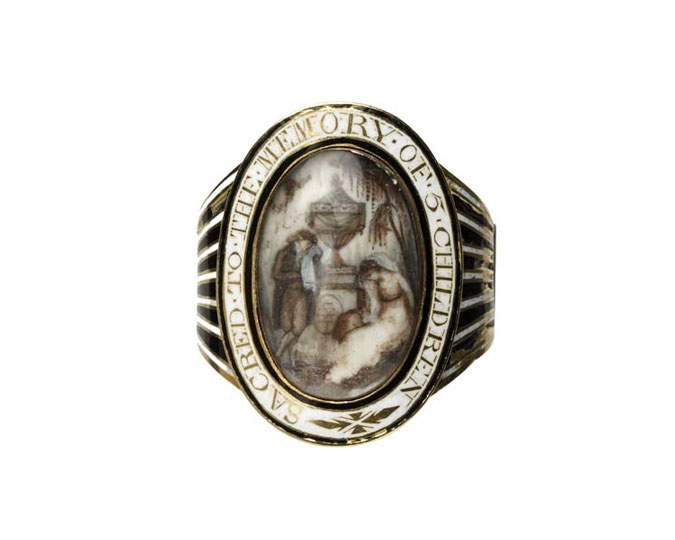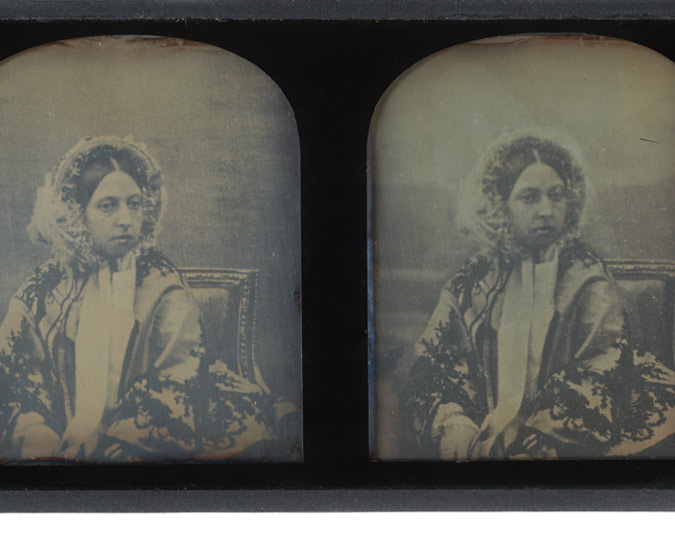Lucie Whitmore, fashion curator, tells us the story of the cloth dolls of The Vegetable Kingdom and their eccentric maker, Una Maw.
The Vegetable Kingdom dolls are a collection of 34 visually striking dolls. Just like Londoners, they come in a variety of shapes and sizes and wear characterful expressions. Some of them are convivial and smiling, others less so. Whether you find them charming or creepy, the usual reaction on a first encounter is one of curiosity. Who made these? Why? And, most importantly, who is Lord Cucumber?
Who was Una Maw?
These dolls tell us a story of the individual creativity and unusual sense of humour of their maker, Una Maw. She was a creative force; not only did she make the dolls herself but she also wrote an accompanying illustrated book of stories in which they are characters. Though she was not a well-known author, she published two books, two volumes of poetry and two musical scores. Her poems were occasionally published in the periodical Poetry of Today. She was also a painter, and in 1929 she held her own exhibition of water colours, embroideries and writings on Victoria Street, London.
We know from letters sent by Una to the museum that she took comfort in her hobbies. In March 1930 she wrote to the Museum Keeper Mr Henderson stating: “I’ve taken a wee cottage […] for one year furnished and want to get down to some writing and painting as they are my hobbies! […] it’s all better than sitting twirling one’s thumbs.” She was a highly imaginative and productive individual, and both her sense of humour and the influence of Indian visual culture, where she lived intermittently between 1900 and the early 1930s, ran throughout her creative work.
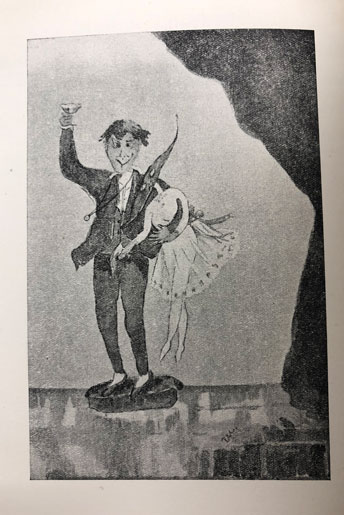
Illustration from The Vegetable Kingdom
It is likely that Una’s first visit to India was for her own wedding in 1898, and her last around 1930. Una’s husband William Maw had been based in India since 1893 onwards, and worked as Assistant Commissioner for the Central Provinces within the Indian Civil Service (ICS). The ICS were a small elite body of usually English officers recruited to oversee all government activity in the 250 districts of British India during the period of British colonial rule (1858 to 1947). Records show that Una and her husband were often separated for long periods, and it seems they spent very little time together during the last decade of Una’s life, by which time she was settled in a cottage in New Forest, Hampshire. By 1939 William was already living with the woman that would become his second wife after Una’s death in 1941.
Una’s long lasting interest in India and its culture is evident both in her writings and in the design of the vegetable dolls. Una’s first volume of poetry Fragments [Verses] was published by the Anjuman Islamia Press in Jubbulpore (Jabalpur) India.
Her second, published in London in 1930, was titled Poems of India. Dedicated to “Dear Athel, who like myself has spent many years in India”, it includes such titles as ‘The Koti Walli’ and ‘The Taj-Agra’. No specific references to India are made in The Vegetable Kingdom, but the influence is clear in the clothing and textiles worn by the vegetable dolls.
Creating outfits for vegetables
We do not know exactly when or where Una collected the fabrics used to make the vegetable dolls, but a number of them are easily identifiable as Indian due to their structure or pattern. Una travelled to India in 1916, so perhaps acquired some of the materials then, bringing them back with her to London before making the dolls around 1920. Of particular note are the outfits worn by Miss Lettuce and Mademoiselle French Bean, which are likely made from the ornately patterned edge of a sari (or saree).
Lord Cucumber and Lord Cabbage both wear garments made from mashru; a satin weave cloth traditionally produced in Muslim regions of India and Turkey, with a silk warp and cotton weft. The silk on the surface gives a lustrous appearance but only cotton is worn against the skin. This was in keeping with a teaching in the Hadith, which forbade Muslim men from wearing silk. The word ‘mashru’ means ‘permitted’.
Like Lord Cucumber, many of the other male characters wear Indian-influenced outfits, in different versions of tunics and pyjama trousers in woven or printed patterned textiles. Lord Leek wears a cotton angrakha, a garment introduced to India by the Persians, also worn as uniform by the British Army irregular cavalry in the early nineteenth century. Angrakhas were worn by Indian princes and other elite men from the early nineteenth century onwards. Presumably this garment was chosen by Maw to reflect Lord Leek’s status as Prime Minister within the Vegetable Kingdom.
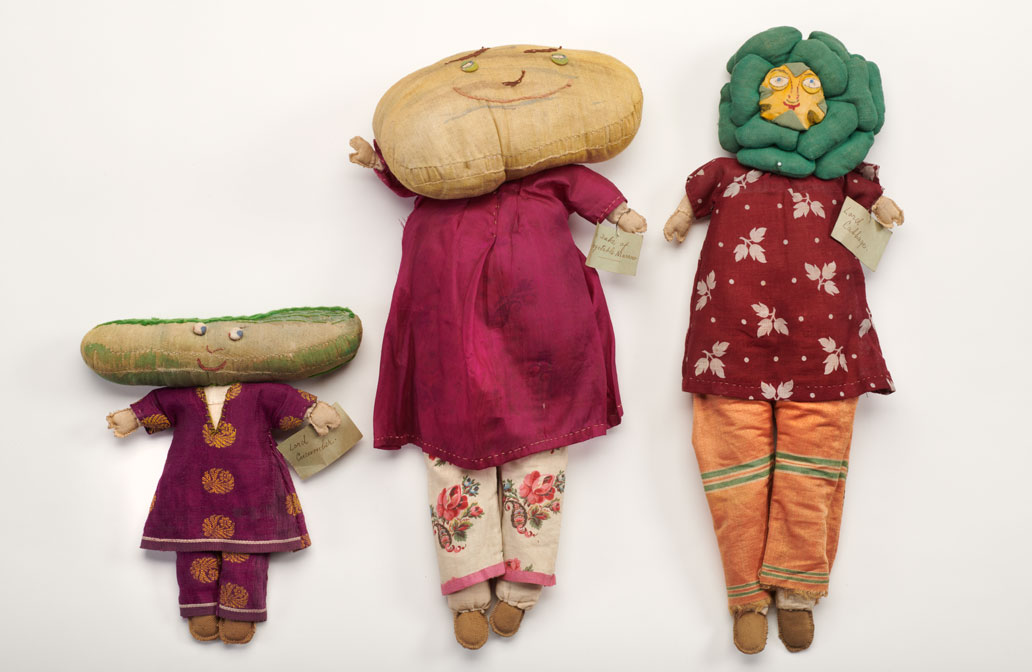
Vegetable Dolls: Lord Cucumber, Duke of Vegetable Marrow and Lord Cabbage, made by Una Maw c.1910 - 1922
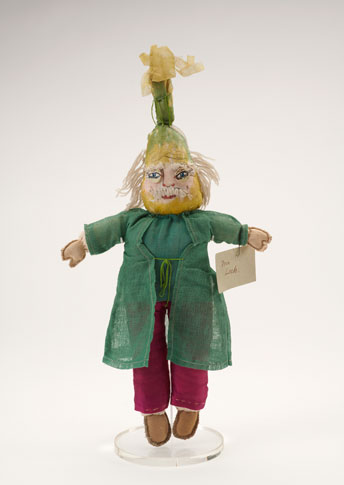
Vegetable Dolls: Lord Leek, made by Una Maw c.1910 - 1922
Historical references
Lord Leek also closely resembles the Prime Minister from the time the book was written – David Lloyd George – who, like Lord Leek, was Welsh. This is just one example of the historical references found within the primarily fantastical world of The Vegetable Kingdom.
The vegetable dolls have been in the Museum of London collection for 97 years, and we know that they were displayed at some point in the 1920s. 2019, however, was the first time since their donation that they were reunited with Maw’s book The Vegetable Kingdom.
We were lucky to acquire a copy of the book earlier this year, inscribed by the author: “To dear little Lizette & Joan, with Una's love.” We do not know of any other existing copies, though her other publications are all in the collection of the British Library.
When Una donated the dolls in 1922 she wrote that she would be ‘honoured’ and ‘very proud’ if they were accepted into the collection. Her last letter was sent to the museum in 1930, asking when the dolls would next be going on display as ‘so many’ of her friends wanted to see them. In response Museum Keeper Mr Henderson wrote: “Your very charming dolls have been on exhibition but are at the moment taking their turn of seclusion. I cannot say at present when they will emerge again, but you will realise that like all museums we are only able to exhibit a portion of our collections at any one time. However, their turn will come again.”
The vegetable dolls' turn has finally arrived – you can see nine of the vegetable dolls, alongside the book, in the Show Space until the end of the year.
With thanks to Dr Toolika Gupta of the Indian Centre of Crafts & Design for her help with the identification and terminology of Indian garments and textiles.

